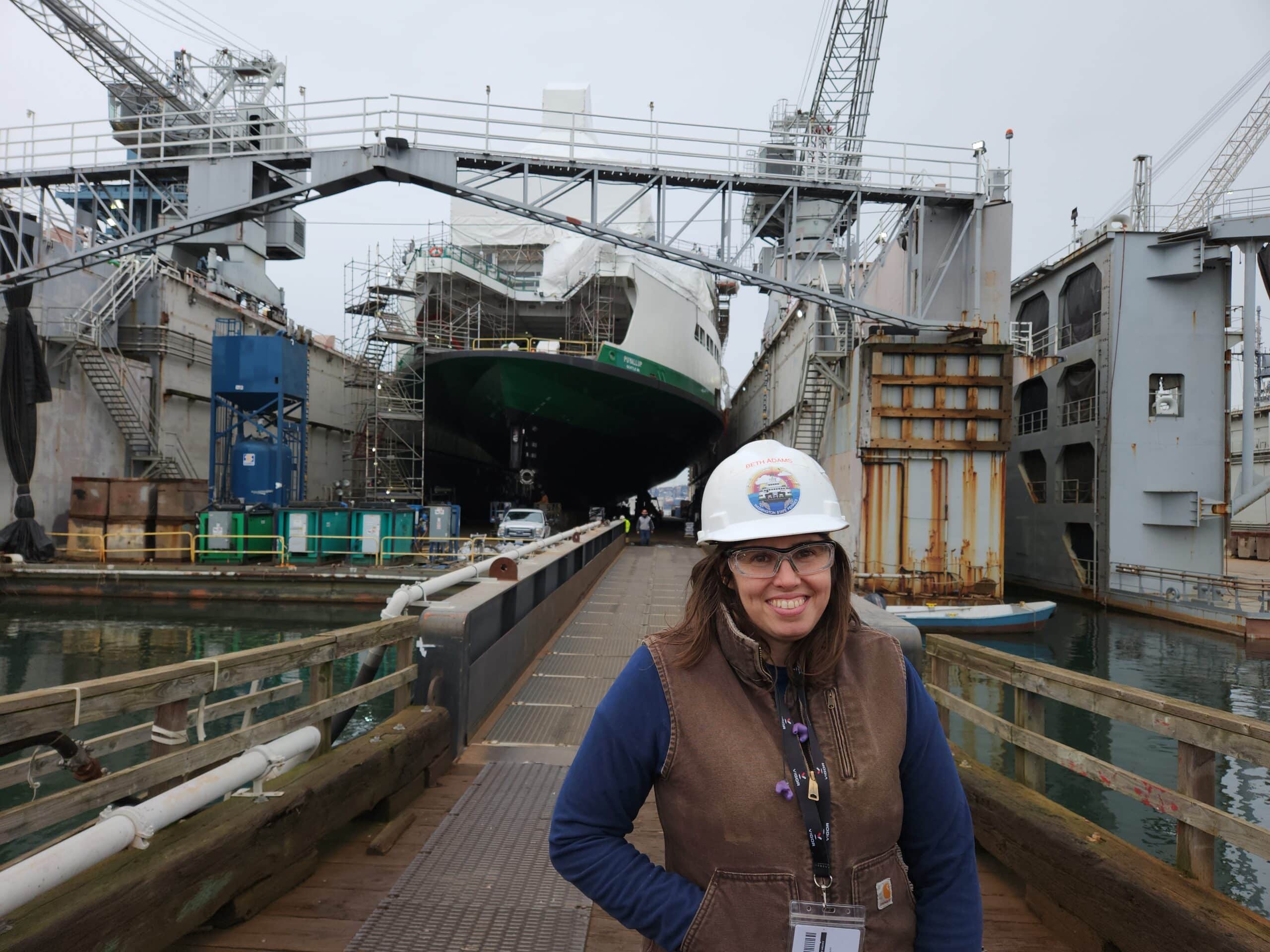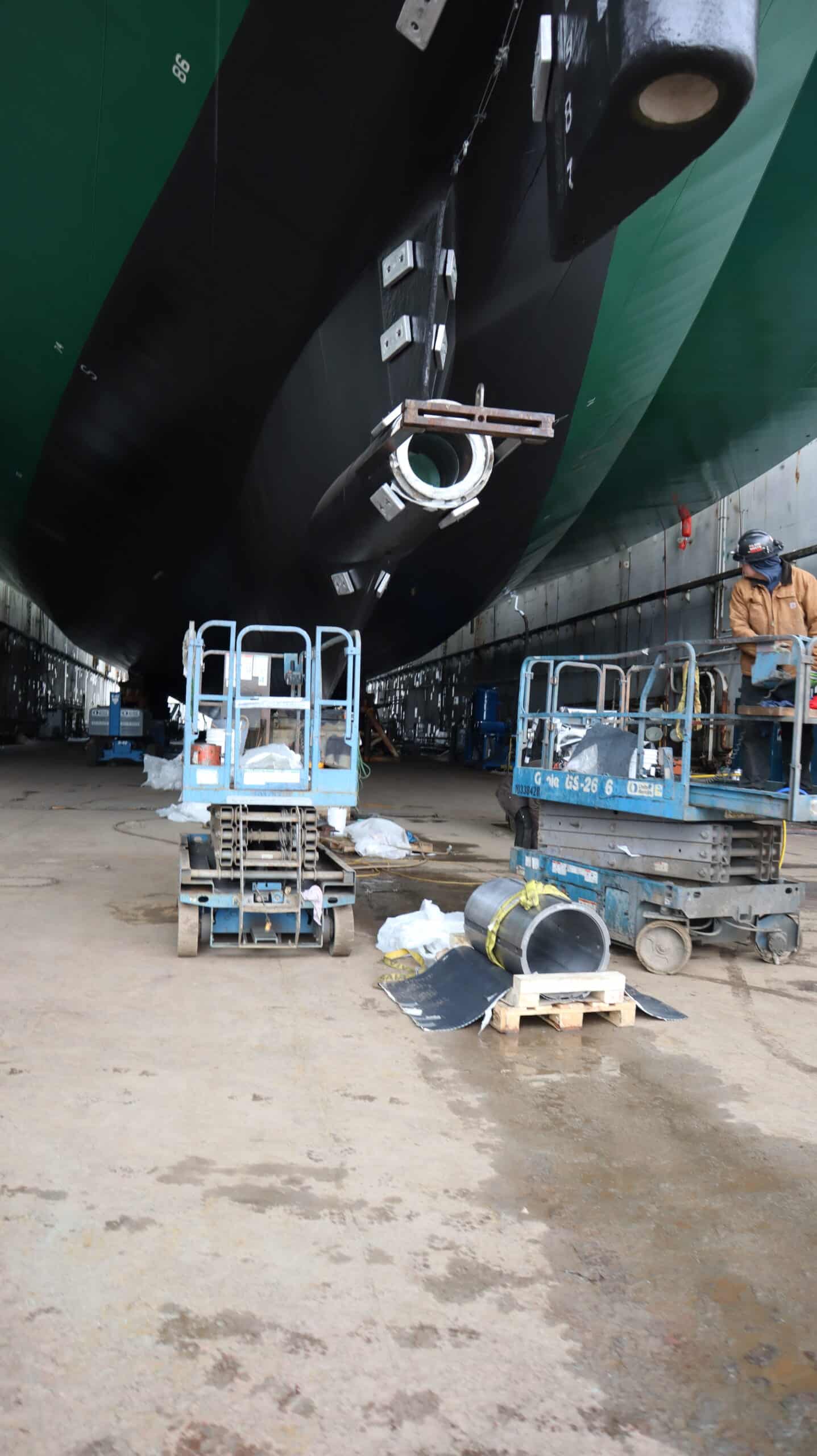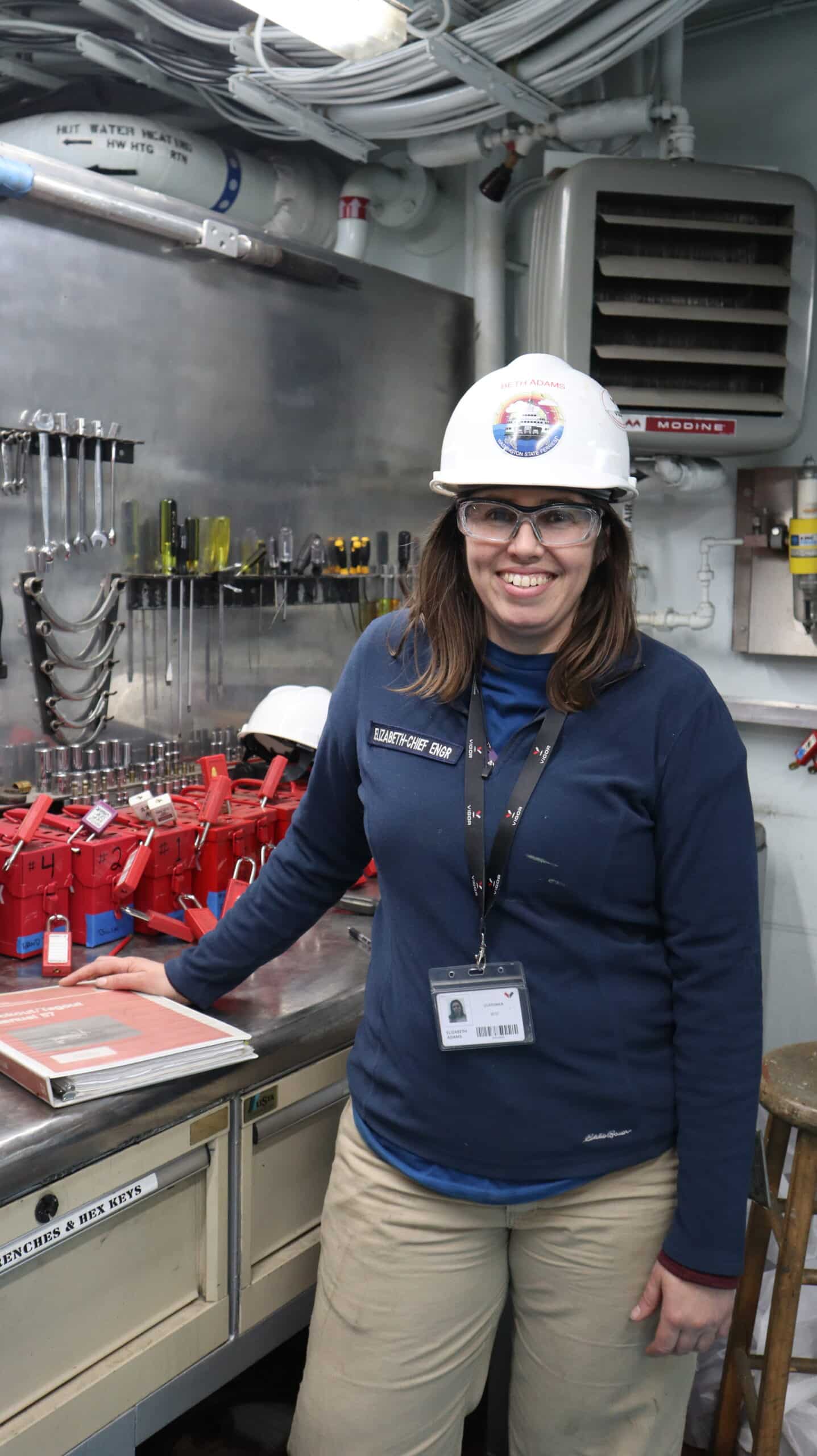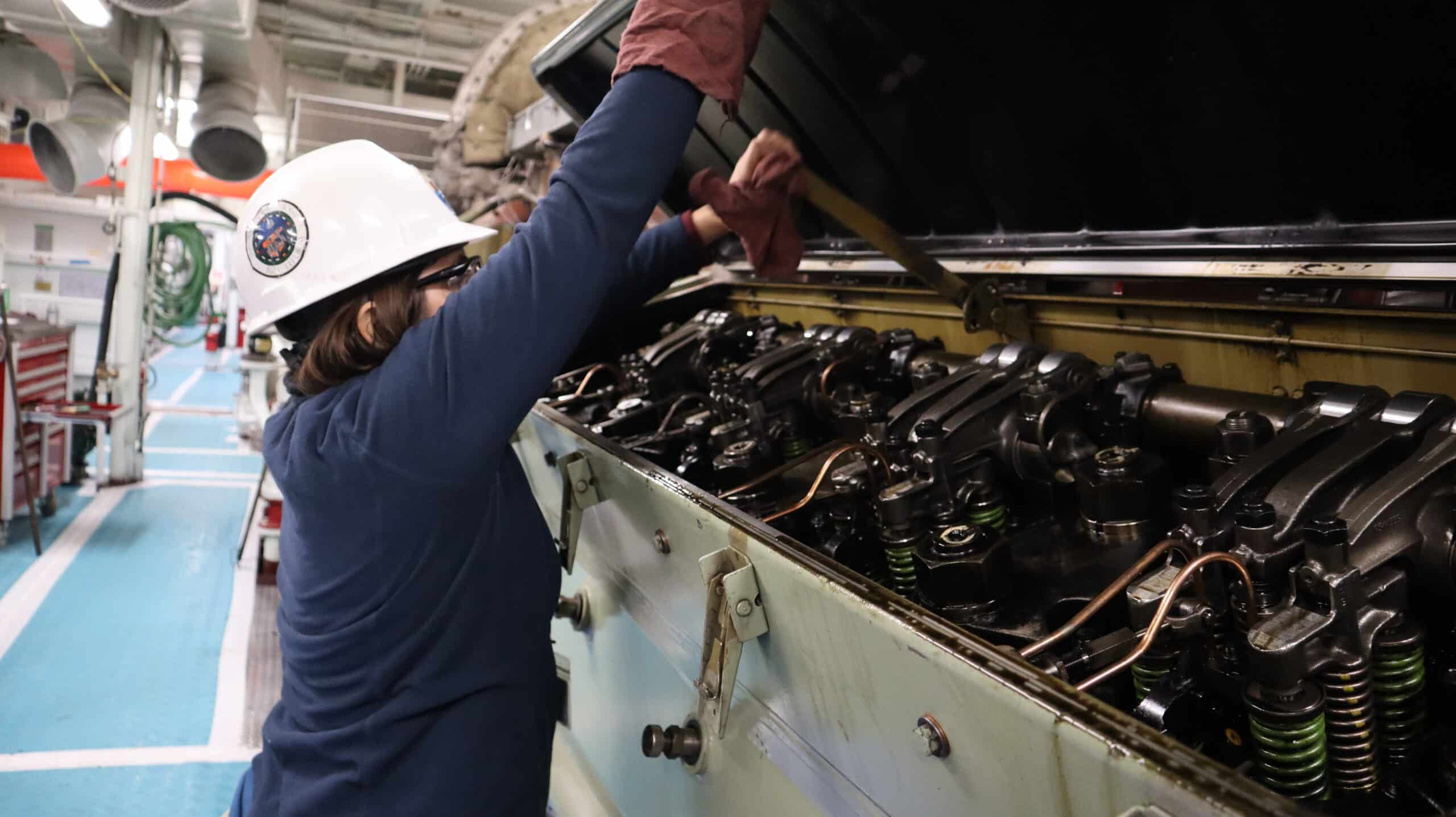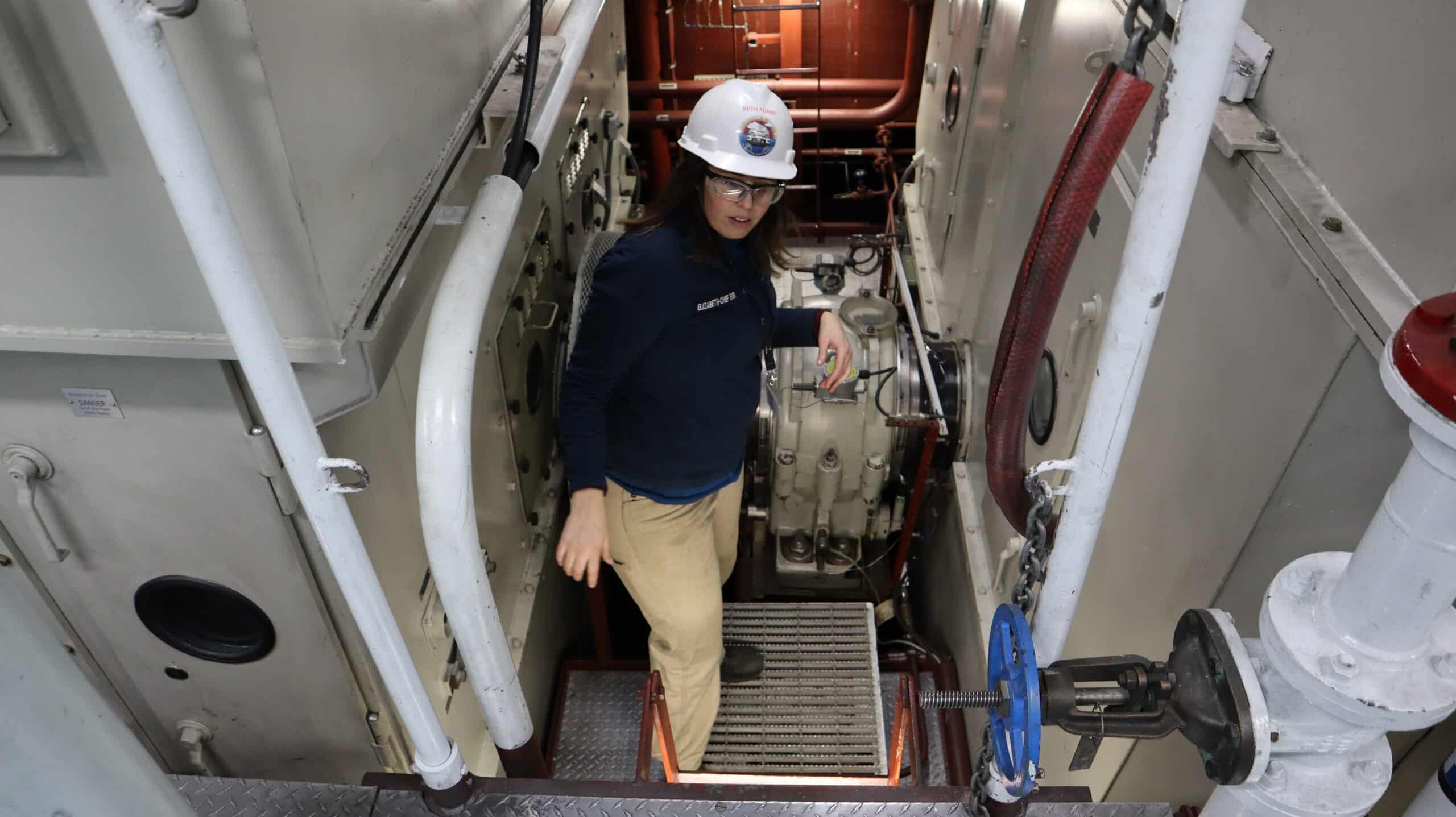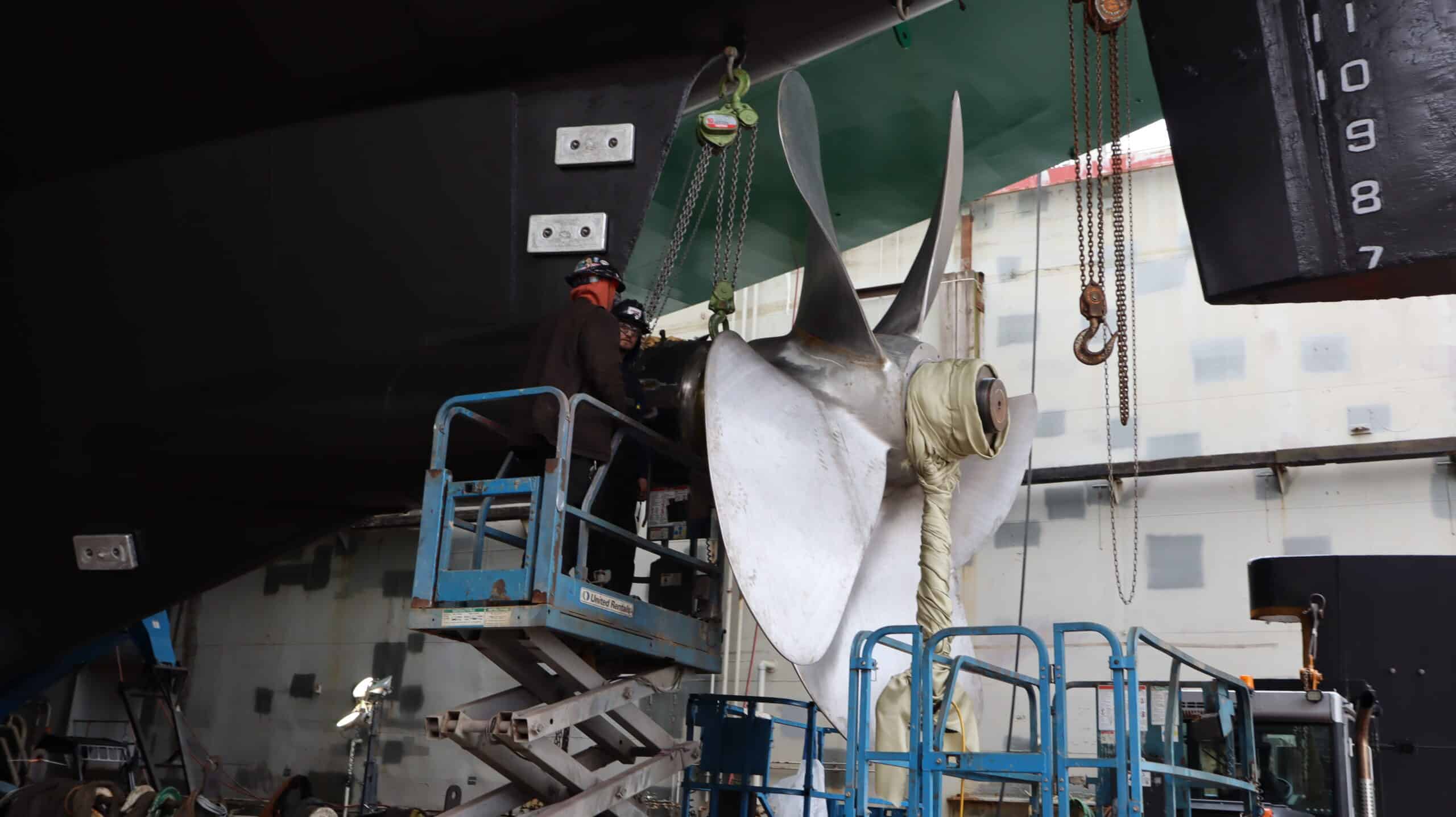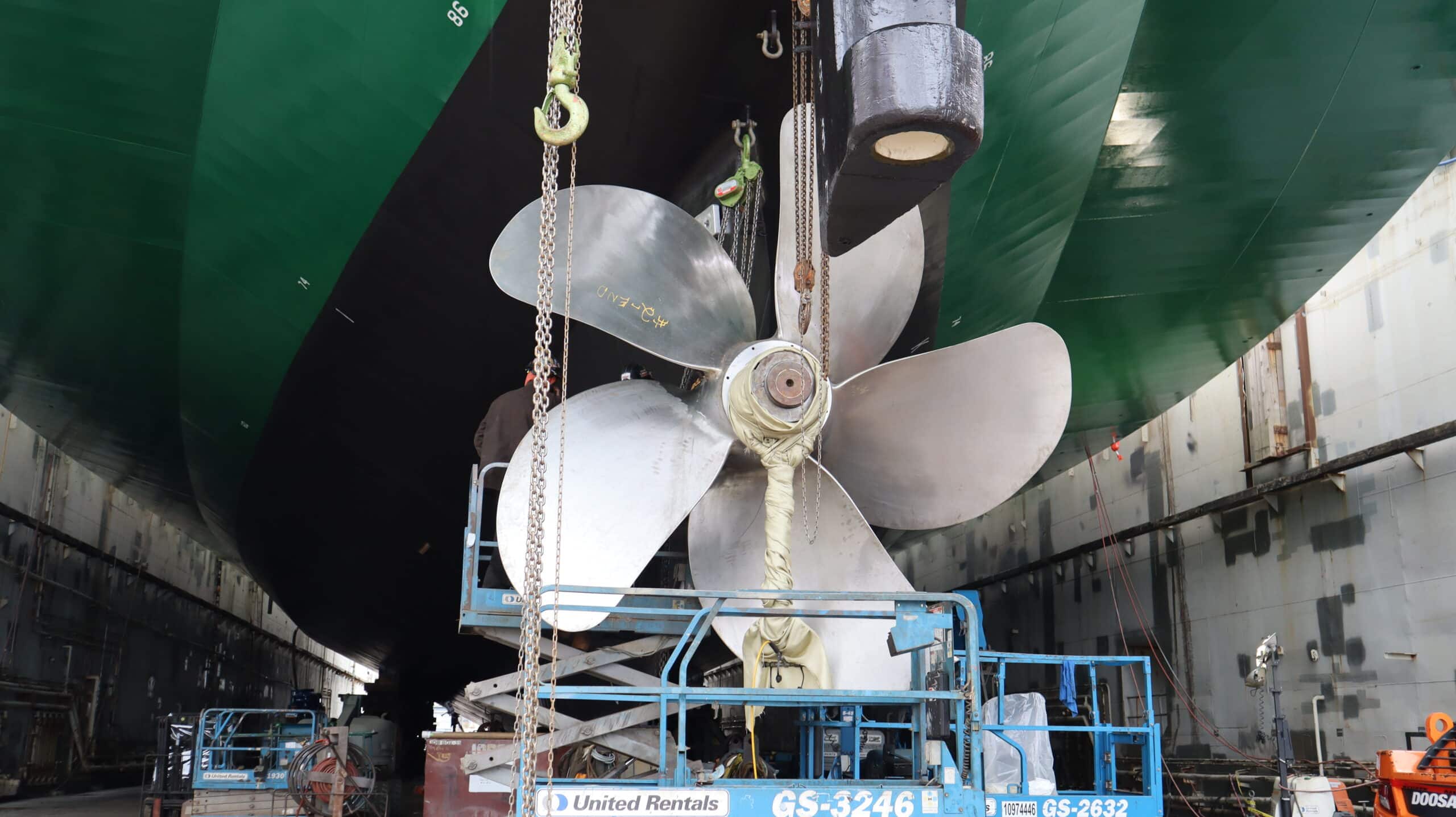Meet Beth Adams, Chief Engineer of the M/V Puyallup with Washington State Ferries, and learn what it takes to keep a 13-million pound ship sailing.
Beth Adams and the M/V Puyallup
Beth Adams is one of the chief engineers of the M/V Puyallup—one of Washington State’s iconic green and white ferries. A “Jumbo Mark II” Class ferry, the Puyallup weighs 6,000 tons, and can carry more than 200 cars and 2000 passengers every trip. Beth is responsible for ensuring the Puyallup can keep on sailing.
In January 2024, the Puyallup is in a dry dock in south Seattle. While a ferry may seem approachable when you’re boarding an upper deck, walking underneath the ship while it’s suspended in the air makes it obvious how truly massive these vessels are. The M/V Puyallup is one of the biggest ships in the Washington State Ferries system, and the black hull blocks out the sun (and rain clouds) in the drydock.
While the Puyallup is in drydock, walking directly onboard isn’t an option, so Beth climbs the flights of scaffolding stairs up to the car deck and steps onto the ship. There’s equipment, toolboxes, lights, exhaust fans, and plastic-covered entryways everywhere where you would normally park or walk onboard.
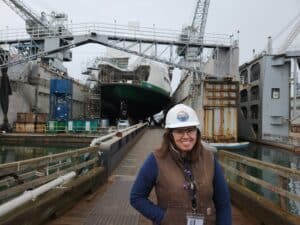
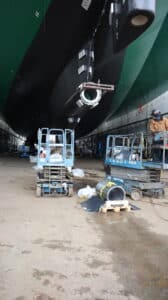
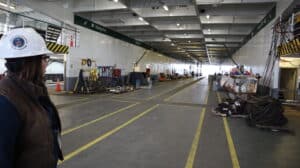
Descending into the crew-only areas of the ship, she greets members of the team who are working on their five-year maintenance tasks. The work of maintaining a vessel like the Puyallup is constantly underway, even while sailing across her regular route from Edmonds to Kingston. But every five years, she is sailed into a huge underwater elevator. Once divers ensure that the boat is securely balanced on its bottom ridge, the elevator slowly rises out of the water, bringing the M/V Puyallup to the surface to be examined, repainted, repaired, and—in the case of some of the Puyallup’s sister ships—retrofitted with batteries.
Beth’s coworkers who work to maintain the engines and operations of the Puyallup work in four crews across a day and night shift for 12 hours a day, for 10 days at a time. There are four chief engineers who manage these crews alongside assistant engineers and ‘boilers’—the workers responsible for the basic maintenance of the ship.
Beth started as a boiler apprentice about 10 years ago after a career change, and “climbed the hawespipe” to her current position. She had been working towards a career teaching high school English, but after a summer position as an educator and deckhand aboard the schooner Adventuress, she found her passion. “I kind of fell in love with tall ships and sailing and this whole boat thing,” said Beth.
Running a Ferry
Grabbing a couple of towels to keep her hands clean, she pops open the latches keeping the valve covers of one of the Puyallup’s four engines closed and lifts the hinged lid. Inside are the rocker heads of a 6000-horsepower engine. Unlike in a car, there are no direct mechanical connections from the engine to either of the M/V Puyallup’s propellors at each end of the ship. Instead, these massive engines run alternators to power the electric motors which turn the propellors. The alternators that power everything aboard generate current at 4,160 volts, which is stepped down for other uses in nearby breaker and transformer rooms. For comparison, a house in the United States typically uses 120-volt power, while cars generally use 12-volt power.
The Washington State Ferries system is undergoing a retrofit to upgrade their ferries to hybrid diesel-electric, enabling charging and power storage on all vessels, even their largest ferries like the Puyallup. While Puyallup isn’t slated for the retrofit during this drydock visit, she’ll undergo the transformation at her next drydock in 2029—one of the last in the fleet to do so.
Keeping engines like the Puyallup’s cool requires a lot of water. Because the salty water of Puget Sound can’t be used—it is too corrosive to the unpainted steel components of a ferry—it is necessary for the Puyallup to carry a supply of fresh water aboard to cool the engines. This water is also used for other systems, such as fire suppression and heating the cabins in cooler seasons.
The fuel capacity of the massive ship takes up only a fraction of the below-decks engine space – and they still only need to refuel once every other week.
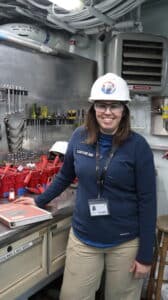
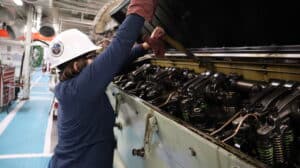
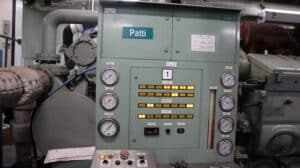
The Invisible Engineers
Beth’s goal as an engineer is to go unnoticed. Even if one of the four engines were to need maintenance while the ship was underway, Beth says that most people wouldn’t even notice a difference. “One of the things I love about the Mark II class of boats is how much redundancy there is,” said Beth. “Basically, if we do our job right, everybody kind of forgets that we exist.”
As she walks through the ship, engineering staff keep mentioning how incredibly reliable the Puyallup is. As a vessel, they’ve won awards from the Washington State Ferries system for 17 out of the 25 years for not missing a single trip for mechanical reasons for the entire year throughout its 21-hour-a-day operating schedule. “It takes incredibly dedicated and skilled and resourceful engineers to do that,” said Beth.
While the boat is operational, Beth spends most of her time in the control room, monitoring temperatures across “the plant,” as she calls the cumulative parts of the engine and control systems. She will also do rounds to visually inspect everything during the day shift while the boat is sailing or at dock.
Daytime work is typically for smaller projects that won’t impact passengers, like changing out air filters from an air conditioning system. The night shift takes on larger projects, such as working in a room with a propellor shaft that would be turning while the ship is in motion. Large scale maintenance projects are held for the five-year maintenance timeline.
According to Beth, other large-scale commercial ships are generally expected to last for 20 years. The Washington State Ferry system expects each of their ships to operate for 60 years.
One of the things that Beth loves most about her work is that “the engineers get all the good toys.” She’s proud to be able to work on the thousands of parts and components that go into making a ship like the Puyallup run, from the train-sized engines and car-sized alternators to the comparatively simpler systems like the auxiliary boiler that keeps cabins warm in winter or during the night while engines are off.
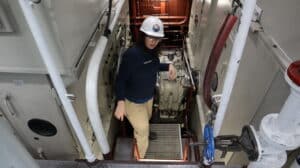
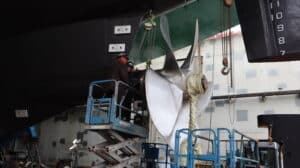
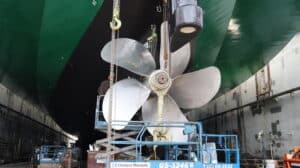
Of working in the maritime industry, Beth says, “this is a great career filled with lots of opportunities for people.” She does qualify that for her position, “You have got to be okay with a lot of weird things like crawling through bilges and sewage pumps, but if you’re good with that, it’s really flippin’ awesome.”
As for being a woman in a generally male-dominated industry, Beth said that “it is changing, and people are often incredibly supportive.” She pointed out that it was only in 2010 that the US Navy began allowing women to serve on submarines. By 2022, Angie Koogler had become the first woman Chief of Boat on a submarine, the highest-ranking enlisted person on a sub. “It’s changing, and there’s a lot of support,” said Beth.
As a woman in a high-ranking position on a ferry, Beth says that “people may be surprised to see you showing up in a certain capacity but tend to be incredibly receptive and supportive as soon as you demonstrate that you’re here to work and the job.” Beth says that “there’s sort of an automatic sisterhood” amongst female ferry workers and that she has had many great mentors in her time working aboard. “When I started working here, out of about 400 people in the engine department across the fleet, you could count the women on your fingers. Now, you got to take off your socks,” said Beth.
If you liked this story and would like to learn about Beth’s role, check out the WSF video profile of Beth! Or, to read more about other women on Washington’s working waterfronts, check out our other “Women on the Waterfront” stories. Hear from tugboat captain Katrina Anderson about what it’s like to guide ships to shore, or hear from Cathy Wade about long seasons of fishing in Alaska.


